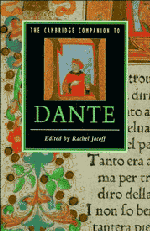Book contents
- Frontmatter
- 1 Life of Dante
- 2 Dante and the lyric past
- 3 Approaching the Vita nuova
- 4 The unfinished author
- 5 Dante and the empire
- 6 Dante and Florence
- 7 Dante and the classical poets
- 8 Dante and the Bible
- 9 The theology of Dante
- 10 A poetics of chaos and harmony
- 11 Introduction to Inferno
- 12 Introduction to Purgatorio
- 13 "Shadowy prefaces"
- 14 Dante and his commentators
- 15 Dante in English
- Further reading
- Index
10 - A poetics of chaos and harmony
Published online by Cambridge University Press: 28 May 2006
- Frontmatter
- 1 Life of Dante
- 2 Dante and the lyric past
- 3 Approaching the Vita nuova
- 4 The unfinished author
- 5 Dante and the empire
- 6 Dante and Florence
- 7 Dante and the classical poets
- 8 Dante and the Bible
- 9 The theology of Dante
- 10 A poetics of chaos and harmony
- 11 Introduction to Inferno
- 12 Introduction to Purgatorio
- 13 "Shadowy prefaces"
- 14 Dante and his commentators
- 15 Dante in English
- Further reading
- Index
Summary
THAT DANTE PRESENTS Hell as a realm of chaos and confusion, and Paradise as one of harmony and union, a reader of the Commedia recognizes in the first reading. The astonishing variety of settings and of infernal guards in Hell, the rapid shifts from one of the many damned souls to another, their hostility to Dante and to their companions, all contrast sharply with Paradise, where the heavens seem to differ only in intensity of light and joy, where the souls come to meet and to share their joy with Dante, and the movement from one soul to another seems slow and dignified. Purgatory is transitional, with fewer changes in setting, guards who instruct rather than control, souls fixed only temporarily where Dante sees them, trying to be helpful to him and to each other. Perhaps because it is transitional, Purgatory is more given to formal and visual patterns which fix it in the mind if not in reality.
These large differences are suggested by the action of the plot, but are reinforced by a whole range of formal elements. I shall consider a number of these here: the length of individual cantos, the relative proportions of narrative and speech, enjambment, and the varieties of rhyme and of rhyme sounds within and beyond terza rirna.
- Type
- Chapter
- Information
- The Cambridge Companion to Dante , pp. 153 - 171Publisher: Cambridge University PressPrint publication year: 1993

